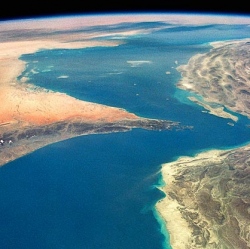
NASA provided $370 million in funding for space technologies that are at a tipping point.
NASA believes space technology is at a tipping point if: An investment in a ground demonstration or flight demonstration will result in:
A significant advancement of the technology’s maturation, and a significant improvement in the offerors’ ability to successfully bring the technology to market, and, previous investments have been made to mature the proposed technology system in preparation for commercialization, demonstrating a pre-existing plan to commercialize the technology, and, the proposed technology system is at a Technology Readiness Level of at least 4 at time of submission of the preliminary proposal.
Here are the Projects:
Cryogenic Fluid Management Technology Demonstrations-SpaceX
$53.2 million Large-scale flight demonstration to transfer 10 metric tons of cryogenic propellant, specifically liquid oxygen, between tanks on a Starship vehicle.
Lockheed Martin $89.7 million In-space demonstration mission using liquid hydrogen – the most challenging of the cryogenic propellants – to test more than a dozen cryogenic fluid management technologies, positioning them for infusion into future space systems.
Lunar Surface Innovation Initiative Technology Demonstration NASA invested in technologies needed to advance in-situ resource utilization, surface power generation and energy storage, communications, and more.
Alpha Space Test and Research Alliance of Houston, $22.1 million – The space science and technology evaluation facility will give small experiments access to the lunar environment to collect data and experience exposure to the ultraviolet and charged particle radiation.
Astrobotic Technology of Pittsburgh, $5.8 million – This is mature and will demonstrate a fast, wireless charging system that addresses challenges associated with using the technology on the Moon.
Masten Space Systems of Mojave, California, $2.8 million – To Build and demonstrate a universal chemical heat and electrical power source attachment that lets payloads survive the extreme environments encountered during the lunar night and in craters.
Nokia of America Corporation of Sunnyvale, California, $14.1 million – Inspired by terrestrial technology, Nokia proposes to deploy the first LTE/4G communications system in space.
The technology could run the future infrastructure that processes water harvested on the Moon and creates propellant and other mission consumables.
Teledyne Energy Systems of Hunt Valley, Maryland, $2.8 million – Advance a hydrogen electrical power system to enable a fuel cell with an operating lifetime of 10,000 hours.
Closed-Loop Descent and Landing Capability Demonstration Suborbital platforms can enable testing of integrated precision landing and hazard avoidance technologies, using lunar trajectories during descent and landing.
Masten will mature its Xogdor vehicle to provide researchers from government, academia, and industry with a new platform for testing space technologies.
